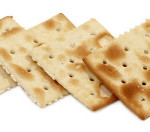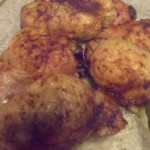 Ahhh…Zwieback!!! What could represent a soul food for German & Russian families better than Zwieback buns…
Ahhh…Zwieback!!! What could represent a soul food for German & Russian families better than Zwieback buns…
I can remember the smell of zwieback baking in my grandmother’s farmhouse kitchen, my mother’s kitchen, as well as all of my aunts’ kitchens…
…It is an ultimate goal of just about every extended-Kasper female in our family to have this recipe on hand, and hopefully learn to bake them well for ourselves…One day, we won’t have our aunts around to make them for us.
When I went away to university in the United States, my mother would come visit me, we would bake dozens of zwieback, pirozhki & sausage buns and freeze them to last me the majority of my semester. I just couldn’t live without this comfort food.
First of all, let me prelude this Zwieback recipe with a statement:
If you’re not German or Russian, you may not get the delight of these freshly baked, filled with love, mushroom looking buns from our ovens. However, hang out with our family or most any German/Russian family that endeavors to provide these glorious, golden orbs of deliciousness on their table, and you’ll start to see what a delicacy these babies really are.
In fact, zwiebak are a basic bun that are amazing all on their own, but this dough is also the base of the amazing Mennonite sausage buns and Pirozhki, which is a torpedo-shaped bun filled with ground meat.
To share this recipe, is like giving away a family secret, but well worth it to provide smiles all over the world!
* You may want to experiment a bit after you’ve mastered this recipe, maybe by using whole wheat flour as part of the flour requirement, or even adding sweet potato to the dough. Try out my Sweet Potato Buns Recipe, which I also made in zwieback format.
 Type: Bread Recipe
Type: Bread Recipe
Serve With: Softened butter, cheese, jam, cured meats
Prep Time: You’re in this for a few hours easily…
Bake Time: 12-15 minutes
Yield: between 6-7 dozen, depending on size
Ingredients:
- approximately 10-12 cups white flour – half all-purpose, half bread flour combined
- 5 cups milk – scalded
- 1 1/2 tbsp salt
- 1 1/4 cups shortening
- 1/4 cup butter
- 2 large eggs
- 2 1/2 packages (2 1/2 tbsp) traditional yeast
- 2 1/2 tbsp white sugar
- 1/2 cup warm water
Instructions:
- Soften yeast to bloom in 1/2 cup warm water and 1 tbsp sugar. Stir slightly & set aside.
- Into hot scalded milk stir in shortening & butter. Here’s how to scald milk for baking!
- To the scalded milk, add salt & remaining 1 1/2 tbsp sugar til dissolved.
- Cup by cup, add 6 cups of flour, stirring between each addition until flour is combined, making dough like a sponge.
- Set aside covered until mixture has cooled to be lukewarm.
- Add yeast & stir until combined, then add eggs.
- Cup by cup, add enough of remaining flour mixture until the flour is only marginally sticky & almost smooth, either by kneading by hand, or using a mixer hook between additions. * Note: You may need less or more flour to attain a nice, smooth, soft result. It will depend on the atmospheric conditions in your region as well. * Tip: You may want to place dough on a pastry sheet to finish the kneading process.
- Place dough in a slightly greased bowl, and cover dough with plastic wrap, and then a clean linen or cotton tea towel (not terry cloth). * Optional: Wrap entire bowl with dough covered with plastic wrap & tea towel, in a large, clean towel to ensure the dough stays warm.
- Set dough aside somewhere there is not a draft, and let it rise to double the volume.
- Punch down dough & allow to rise again to double volume, in a non-drafty area of your home or kitchen. * Note: It may be a possibility that you will need to add a bit of flour to attain a smooth, silky dough again.
- Pinch off balls of dough with one being approximately 2″ in diameter, which will be the bottom piece of the bun, and one approximately 1.25″ in diameter for the top portion of the bun, and place on un-greased cookie sheets.
- Using your index finger, press the top ball on to the bottom ball, then poke top ball with a toothpick.
- Cover each sheet of raw buns with light weight cotton or linen tea towels, and allow to rise again until they are approximately double in size, in a draft-free, warm area of your home or kitchen.
- When the buns have risen, place sheets into a preheated oven of 400 degrees F for 5 mins.
- Lower the heat to 350 degrees F for 7-10 minutes. Note: Until you complete your first tray of buns, keep an eye on them to ascertain your buns reach the desired golden brown color, and that you don’t allow them to get too dark. Then, continue with the remaining trays.
- Set your hot tray of buns on a heatproof surface & using a flat turner, loosen each bun & turn each bun on its’ side for 5 minutes, then place them wire cooling racks.
Enjoy these zwieback while they’re hot or when they’re cold. Serve for breakfast, as a snack, or as the bread with a meal. You can eat them with softened butter, cheese, jam, cured meats, make tiny sandwiches with them or use the bread in recipes, such as my Quick Escargot Recipe.
They are easy to reheat in the oven, or even nuke them in the microwave for approximately 10-15 seconds.
Zwieback freeze very well in large freezer bags for a few months. When quickly reheating from frozen, place in microwave on defrost for 1 minute.
* Tip: Store each freezer bag of zwieback with a dry paper towel inserted into the bag. When you remove them from the freezer to defrost on the counter or in the refrigerator, the paper towel will soak up any excess moisture from being frozen.
* Note: If your zwieback don’t look perfect when you make them, no need to worry, they’ll still taste great, and you’ll improve your zwieback shaping skills as you create them more often. It is an art-form of sorts! Don’t be discouraged…
***
I hope you enjoyed this German Food Recipe on Cooking with Kimberly. Until next time…
Eat Deliciously!
top photo:fromomaskitchen.blogspot.ca
Similar Posts:
- National Hot Cross Bun Day: How to Bake Hot Cross Buns with Milk Glaze
- How to Bake Homemade Hamburger & Hot Dog Buns
- How to Bake Kimberly’s Sweet Potato Buns
- How to Bake Traditional White Bread + Video
- How to Bake Grandma Kasper’s Paska Bread: Easter Surprises










October 12, 2012
You forgot the absolute best way to eat Zwieback, IMO. My Polish great-grandma makes awesome zwieback, and we dip the hard buns into sweet, hot tea to soften them, usually at breakfast.
October 14, 2012
We love to eat them this way, especially when they aren’t as soft as on the first day. In fact, we love to dunk them in “baby coffee”…1/2 coffee, 1/2 milk and sweetened to your taste. Yum! I can still see my Opa in my head eating them this way. Thank you so much for sharing, Elaina!!!
Kimberly 🙂